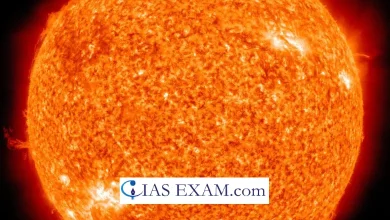
Context
The role of technology is in providing data-driven insights into the nature and intensity of heat stress in urban heat islands.
Innovations for Monitoring Weather and Heat Risks
- In India, several tech innovations have more climate and heat risk tracking.
- There is the soft infrastructure of far off sensing satellites which provide data for monitoring weather patterns, land surface temperatures and urban heat islands.
- Hard infrastructure sensors are deployed in towns to acquire actual-time statistics on numerous parameters like temperature, humidity, precipitation and air quality.
- Challenges: India’s tech adoption in climate and heat risk tracking is developing but isn’t at par with different developed countries.
- The main Indian towns have 7 to 8 India Meteorological Development weather stations on an average, a comparable city like San Francisco would have more than 100 climate tracking stations.
- Data: India focuses more on water risk and security and consequently have more granular statistics on precipitation, even as heat isn’t always a strong part of the monitoring method.
- In developed economies, climate tracking is performed by several actors, from academic and studies establishments to government bodies to the non-public region. All of this rich data provides a much more nuanced understanding of scenarios.
What is an Urban Heat Island?
- An Urban Heat Island (UHI) is an area in which the temperature is higher than in surrounding rural areas due to human activities and infrastructure.
International Organization for Migration (IOM)
- Urban heat islands ought to result in temperature variations of up to 6 levels centigrade within a given area or neighbourhood.
- Urban heat islands result from complex interactions among constructed environments, natural elements, and human activities.
Factors Responsible for Urban Heat Islands
- Built Environment: The substances utilized in urban construction, along with concrete and asphalt, soak up and preserve heat, elevating neighborhood temperatures.
- Reduced Vegetation: Urban regions usually have fewer timber and inexperienced areas in comparison to rural areas, which reduces the cooling impact of shade and transpiration.
- Human Activities: Activities like transportation, industry, and energy intake release heat into the surroundings, in addition elevating temperatures.
- Altered Surface Characteristics: Urbanization regularly involves changing natural surfaces with artificial ones, which alters the floor reflectivity (albedo) and thermal homes, contributing to accelerated heat absorption.
- Ecological Factors: According to a 2014 Indian Institute of Science report, the precise tree-human ratio needs to be 7 trees for everybody. The loss of bushes will increase the threat of exposure to better temperatures.
- In Indian cities there are places with such bad density of bushes as one tree for 50 humans.
- Also the lack of water bodies can add to the heat effect.
Concerns
- Health Risks: Increased temperatures in urban regions result in heat-associated illnesses including heat exhaustion and heatstroke, particularly among inclined populations like the elderly, youngsters, and individuals with pre-present fitness situations.
- Energy Consumption: Higher temperatures in urban regions cause expanded demand for cooling, which escalates energy consumption and related greenhouse gas emissions.
- Water Management: UHIs disrupt nearby water cycles through altering evaporation fees and reducing groundwater recharge.
- Social Inequity: Vulnerable populations, which include low-earnings groups and those living in insufficient housing, are regularly disproportionately laid low with UHIs because of restricted access to cooling sources and healthcare offerings.
Way Ahead
- The function of tech is in supplying data-driven insights into the character and depth of heat pressure, imparting early warning, and at the mitigation end look at the larger gamut of materials and arising with ‘cooler’ substances.
- But more importantly, the city heat islands issue is an urban design and improvement problem, which needs to be checked out from a larger lens of financial policy, urban control and sustainable residing in towns.
Source: The Indian Express
UPSC Mains Practice Question
Q.What is the Urban Heat Island effect? Mention the factors that are responsible for this phenomenon. (250 words)





.png)



